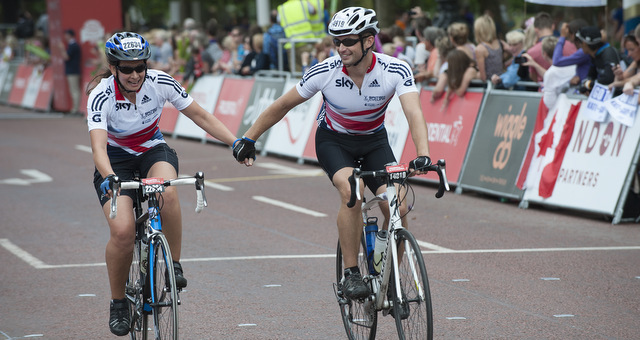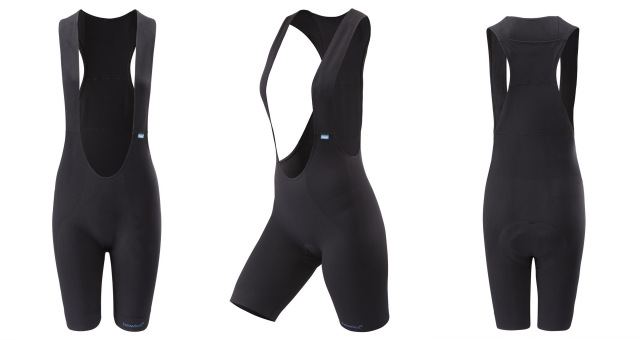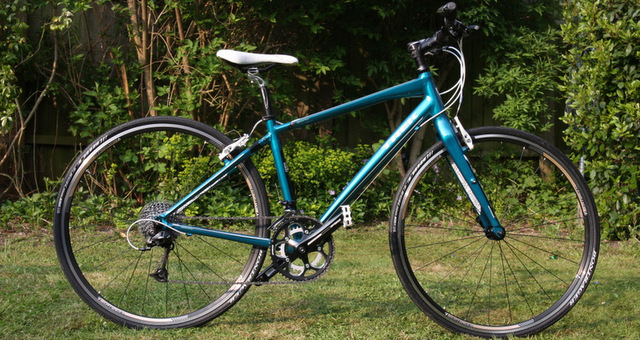Do corners fill you with dread? Do you end up losing momentum and find yourself grinding to a halt to tackle that bend? Stop yourself from viewing corners as annoying obstacles that hinder your ride by following Gary Willis’ top tips.

Cornering can be so much fun and add a real extra dimension to your cycling by allowing you to carry extra momentum through corners and reduce your need to pedal and get back up to speed. It can also just be plain fun cruising round the corners and the feeling of speed it brings. But how do you approach corners and get the best out of them?
We’ve enlisted the help of Gary Willis, former British Cycling Talent Coach and Scottish Cycling Performance Manager, to guide you through how to master the technique of cornering, enabling you to make some real gains on your bike.
Gary also owns .001, a coaching and training company offering (among other things) women’s only camps in the French Alps – so you’re in safe hands!
Week 3: Cornering
Many cyclists either don’t think about or just get plain frustrated at their cornering technique. A lot lose momentum, brake at the wrong time or take inefficient lines.
Perfect your cornering skills and you’ll no longer lose ground and have to put in extra effort to get back up to speed.
As with the other skills I’ve covered; braking and gearing, planning ahead is key to success. When you’re approaching a corner start to ask yourself some questions.
1. Is the corner tight or open?
By this I mean – can you happily get around the corner without having to engage your brakes or are you going to have to reduce your speed? The sign that tells you if the corner is tight or open is how far round it you can see. If you can’t see round the corner very far, then the corner is getting tight. If you can see the road exiting the corner, then it’s not too tight.
2. Is there good visibility through the corner?
This question is especially relevant to the UK. With small tight roads in the countryside, there are usually hedges and high verges that can affect your visibility through the corner.
Another factor are tree canopies, dappling light, making the road darker in places. In summer this can be an issue as wearing sunglasses, combined with the lack of light can mean your vision is impeded for a few vital milliseconds – you may miss hazards on the road surface that could affect your cornering, such as the road being wet or oily.
3. What is the road surface like?
The road surface can play a large part on your cornering. Is there loose gravel on the road? Is it a smooth surface? As mentioned above is it in the shade and so having the potential to be greasy/wet? Try to read the surface as much as possible and use the information to help you plan your best strategy for getting round the corner.
4. How fast am I approaching the corner?
Speed into corners is the defining area for the success of your cornering. Too fast and you are going to have to brake hard and lose your momentum. Brake too hard and slow yourself down too much before the corner and again you have lost your speed and momentum.
You are looking for the optimum speed based on what you know from the above observations in this section. The best scenario is to apply the brakes on the straight, before the corner. Entering the corner after applying the brakes is vital as braking in the corner will make your bike want to stand up rather than lean over in the corner.
Body position
Getting your body lower and more over the front of your bike drops your centre of gravity lower and gives you more weight and control over the steering at the front end of your bike. The drops is the place for your hands to be when cornering, with your arms relaxed and bent acting as a suspension system able to absorb easily any changes in road surface.
Relaxation
Corners break the pattern of riding and often make riders tense up. If you get anxious approaching a corner, it can ruin all of your preparation – so make sure you’re patient and actively remind yourself to relax.
Take a deep breath, drop your shoulders and bend your elbows – releasing the tensing will work wonders for your body position.
There are so many technical areas of your cycling and it is probably amazing how many you assess and act on sub-consciously. But by just taking some time and finding a quiet area to practice and develop your technical skills you will improve your cycling measurably and make so much of the amazing open roads out there.
Practice makes perfect and whenever you ride keep thinking about your braking, cornering and gears. You could also consider joining us at our next Women’s Only camp in Morzine, France, where we concentrate on these skills plus descending, group riding and enjoying the stunning scenery of the Alps.
[series future=’show’]
Upcoming .001 Women’s Exclusive Camps
Focusing on skill development and technique .001sport camps are designed to help you improve your cycling in a relaxed environment. Training camps include accommodation, meals and all coaching and training support.
Camps include coaching on the following areas:
- Bike position
- Cornering
- Braking
- Group riding skills
- Climbing and descending
- Evening discussion groups
The next camp is scheduled on 09-12 August 2013, and takes place in Haute Savoie, the “Venice of the Alps”.
For more information on training camps contact Gary Willis or visit the .001sport website.





